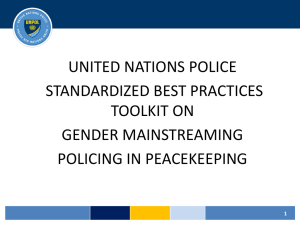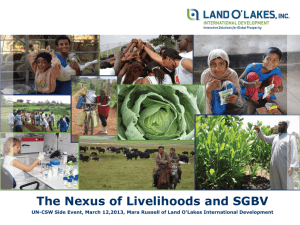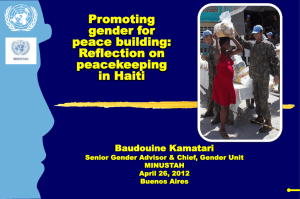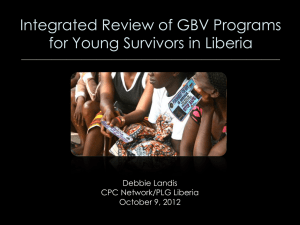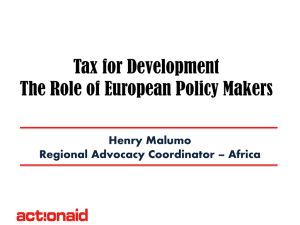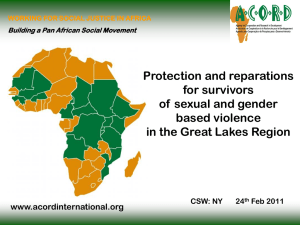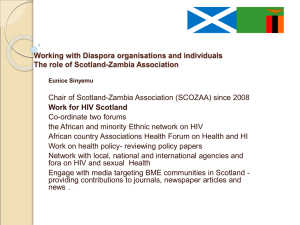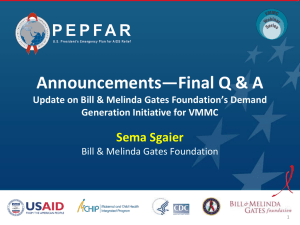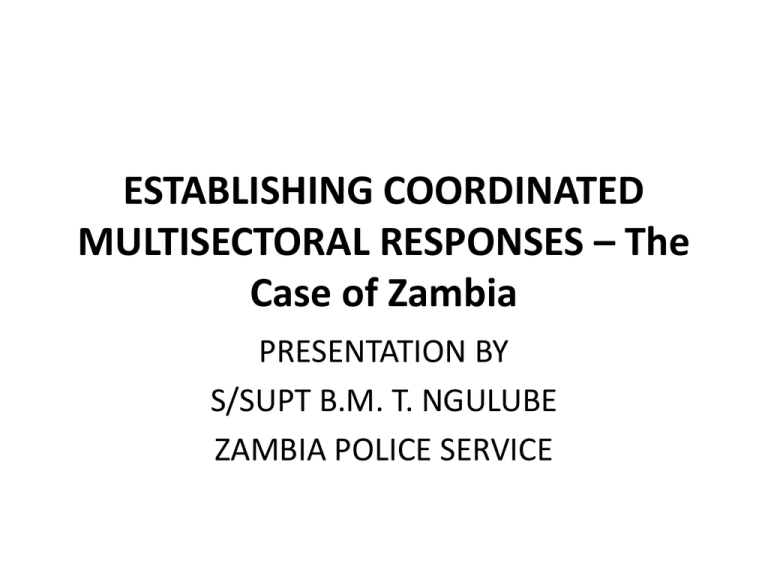
ESTABLISHING COORDINATED
MULTISECTORAL RESPONSES – The
Case of Zambia
PRESENTATION BY
S/SUPT B.M. T. NGULUBE
ZAMBIA POLICE SERVICE
INTRODUCTION
• Establishment of CRCs: The establishment of a
coordinated multisectoral response in Zambia can be
understood better and appreciated by first examining,
nature of the problem, how it was perceived earlier
and the legal environment to address it.
• Nature of the problem: Violence is a daily and often
deadly fact of life for millions of women and children.
• In Southern Africa as in the rest of the world, rape,
abuse and domestic violence occur on an epidemic
scale
Introduction Cont’d
• Perception of SGBV in Zambia in the recent past:
Sexual and Gender Based violence (SGBV) crime
in Zambia is often perpetuated by the cultural
environment that generally does not categorise
SGBV as abuse of human rights.
• Legal environment: initially when victims of SGBV
took initiative and reported to the police, the
police perceived such cases as family issue and
not criminal in nature.
Introduction Cont’d
• Furthermore, Zambia’s statutory legal system
unchanged since independence did not
recognise sexual or physical assault within
marriage as a crime.
• To compound the problem, the criminal
justice was not adequately equipped with
skills, resources or statutes to fully address
SGBV and uphold the rights of women and
children. Some of the challenges included:
Introduction Cont’d
• Current position of Zambia on SGBV: Zambia
is a signatory to a number of international
instruments, which seek to protect women
and children
• The Government of Zambia in collaboration
with a number of stakeholders, including
cooperating partners and the civil society has
been making conseted efforts in addressing
SGBV.
Introduction Cont’d
• The recent effort include the enactment of the
Anti-Gender Based Violence Act No. 1 of 2011,
the amendment Act of the Penal Code (Act No.
15 of 2005) and the enactment of the AntiHuman Trafficking Act No.11 of 2011.
• Consequently, the establishment of coordinated
multisectoral response centres (CRCs)in the
country has helped survivors gain easy access to
legal, medical and psychological support
Introduction Cont’d
• The approach to coordinated multisectoral
response to SGBV has built and enhanced
capacity of the police and health care givers in
handling SGBV
Establishing Coordinated Multisectoral
Responses
• With reference to Zambia, the establishment of
coordinated multi-sectoral responses to address
SGBV was first piloted as a project in 2006
• Among other partners included the following
partners; Ministry of Gender in Development,
Ministry of Community and Social Services,
Ministry of Health, the Zambia Police Service,
Young Women’s Christian Association (YWCA) of
Zambia, Child Justice Forum (CJF)
Establishing Coordinated Multisectoral
Response Cont’d
• Their services include legal, health and
psychosocial counseling, law reform
• The aim of ASAZA Project was to establish
coordinated multi-sectoral responses aimed at
expanding and strengthening the capacity of
the SGBV partnership to improve service
delivery and develop a holistic approach as
well as sustainable support to SGBV victims or
survivors
Establishing Multisectoral Responses
Cont’d
• Implementation methodology:The partners were
involved from the onset of the program to
enhance the understanding of the roles of each
player and thus pave way for coordination in a
multisectoral approach as well as making
referrals easy.
• The role players were also involved in monitoring
and evaluation program for the CRCs so that
together they learn their institutional strength
and weaknesses, and suggest measures to
address the weaknesses
Establishing Coordinated Multisectoral
Responses Cont’d
• two centres were established in 2006, one in
urban settting (Lusaka) and the other in peri
urban setting (Chipata).
• By 2008, the ASAZA Project was scaled-up and
extended to the following areas of Zambia:
Kabwe, Kitwe, Livingstone, Ndola and
Mazabuka. (see map of Zambia as per
attached copy)
Establishing Coordinated Multisectoral
Responses Cont’d
• For easy mobility and quick follow-up of SGBV cases, in
December 2008 Care International Zambia donated to
Zambia Police Service four motor vehicles
• Data capturing and analysis is cardinal for monitoring
and evaluation. To achieve this, Care International
Zambia trained some police officers in data entry and
donated some computers for data capturing.
• contact persons were indentified for each institution,
this development enhanced coordination and ease
referrals whenever faced with a situation that required
the input of other role players.
The Role of the Policce
•
•
•
•
•
To receive SGBV reports and investigate them
Prepare victims for court as witnesses
Bring perpetrators to book
Sensitise the public on SGBV crimes
Offer counselling to victims
Challenges in Establising CRCs
• Lack of shelter or inadequate shelter for the
abused children and women, to ensure safety
of the victims in some of the cases result in
inadequate support
• Transport and communication have been
difficult issues for the centres
• Inadequate space and staffing aspects within
the CRCs (this results in stressing them)
Challenges in Establishing CRCs Cont’d
• The medical services are one of the most
essential services. Hence, the overall shortage of
medical personnel in the country has posed a
challenge to the concept of having a medical
person at the CRC.
• High staff turn-over, especially in governmental
organizations like the Police and Ministry of
Health, as it jeopardizes flow of coordination and
new staff may be ill equipped. Thus training them
adds onto already existing funding constraints.
Overcoming Challenges
• Involve all the partners from the very initial design of
the program and action implementation, including
monitoring and evaluation of the CRCs, as this ensures
institutional strengthening and capacity building for all
the partners at individual and organizational levels
• To overcome staff turn-over, need for continued
training of role players in the fight against SGBV.
• To counteract the shortage for medical personnel,
victims of SGBV must be transported to the nearest
hospitals so they can access services, which in turn
puts a demand on transport.
Overcoming Challenges Cont’d
• To strengthen the laws on SGBV, need to
engage parliamentarians and lobby for
enactment of relevant laws suitable to address
the plight of women and children.
• With regard to inadequate shelter, setting up
shelter places can address the problem.
• Need for enough manpower at the CRCs, to
ensure excellent service delivery.
Overcoming Challenges Cont’d
• To change the culture of silence that does not
recognise SGBV as a violation of human rights,
incorporate community leaders who will play an
important role as a change agent in influencing
perceptions and behavior on SGBV.
• Need to develop protocols on SGBV case management
for legal and health care givers so that there is a
standardized procedure
• For continuity of the CRCs, there is need to have a
consortium in place or an organization among partners
responsible to coordinate, monitor and evaluate
Conclusion
• Involving all the partners from the design of
the program and action implementation,
including monitoring and evaluation of the
CRCs, ensures institutional strengthening and
capacity building for all the partners at
individual and organizational levels.
Conclusion Cont’d
• It furthermore strengthens the capacity of the
partnership and proves that collaborative
work at the CRCs and at national level is an
adequate approach for raising awareness on
SGBV, and introducing measures to counteract
CLARIFICATIONS

